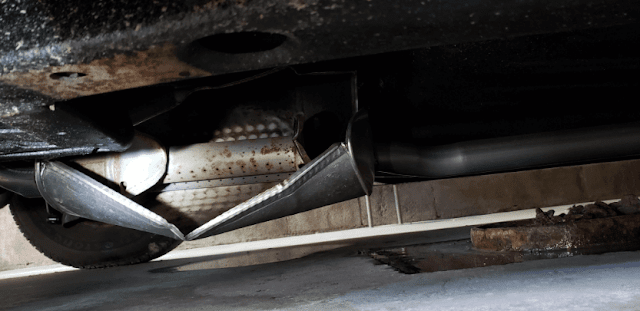The Three Types of Pipes and their Differences: X-Pipe, H-Pipe and Y-Pipe
A glimpse at the different X-Pipe, H-Pipe, and Y-Pipe exhaust system configurations has a novice scratching his head. What’s with all the form factor conventions? Does one perform better than the other? Then, aside from the shapes, there are other differences to scrutinise. Let’s check out the three pipe configurations, their unique qualities, and the reasons for the flow alterations.
Exhaust Systems as Characters
There’s not a whole alphabet of welded tubes in the shop, all waiting to be bolted to a car’s underside. No, there’ll never be an A-to-Z of flow shaping pipework. But the X-Pipe, H-Pipe, and Y-Pipe aftermarket product range do have an important place in the exhaust gasses channeling field. Primarily tasked with creating distinctive flow patterns, this is a mid-pipe exhaust stream management system, one that unleashes vehicle horsepower. How do these three pipe types pull off that impressive objective?Crossover Engineered Exhaust Principles
When the twin pipes of a performance automobile leave the engine manifold, they don’t just make a beeline for their twin mufflers. No, the pipes cross over and intercross in ways that only a performance-biased engineer could imagine. A straight intersection is represented by the classic X-Pipe crossover, a weld pattern that directs the divided exhaust streams until they crash together. The H-Pipe configuration sidesteps that flow crossing design by inserting a small bridging cross-member between the two pipe sections. Finally, the Y-Pipe exhaust system combines the two streams into a single pipe. But why bother in the first place when the gasses still occupy the same space?The Art of Shaping Exhaust Profiles
The three pipe configurations literally use their shapes to generate different exhaust profiles. The sound produced by a direct flow crossover model, for example, creates a loud and raspy growl, a noise that can rattle a driver’s dental fillings. The H-Pipe configuration doesn’t technically cross the streams, but that inserted pipe section does function very well as a performance balancing mechanism, plus it equalizes exhaust acoustics so that a classic muscle car vibe is kicked out. As for the bifurcating Y-Pipe system, that exhaust unifying design relieves back pressure while still creating a uniquely profiled performance profile.Mid-pipe modifications sit comfortably at the heart of an aftermarket exhaust system. They’re located after the exhaust manifold but before the mufflers. Tasked with controlling the turbulent discharge, this is where pipe-divided engine gasses are shaped by crossover technology. The flow patterns shuffle the pulsing gasses around each other and use added pipe segments to bridge the routes taken by the gasses, with the resulting discharge generating noise, added horsepower, and other performance-oriented benefits.
Main Source: This Post “The Three Types of Pipes and their Differences: X-Pipe, H-Pipe and Y-Pipe” appeared first on “Exhaust Tips & Blog“



This comment has been removed by a blog administrator.
ReplyDelete